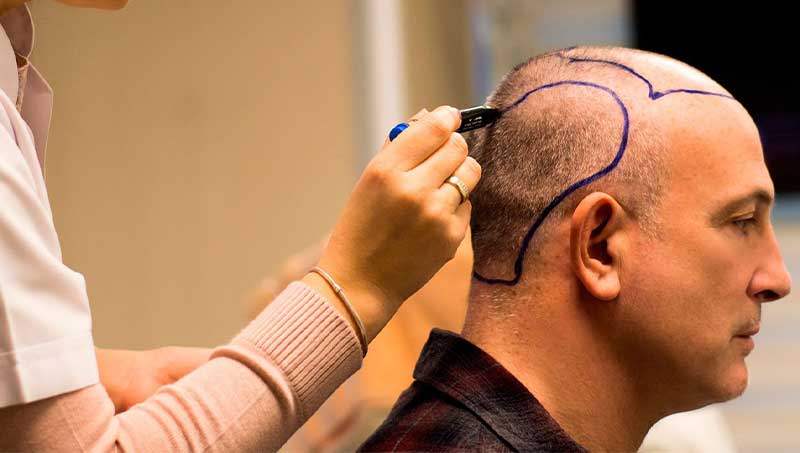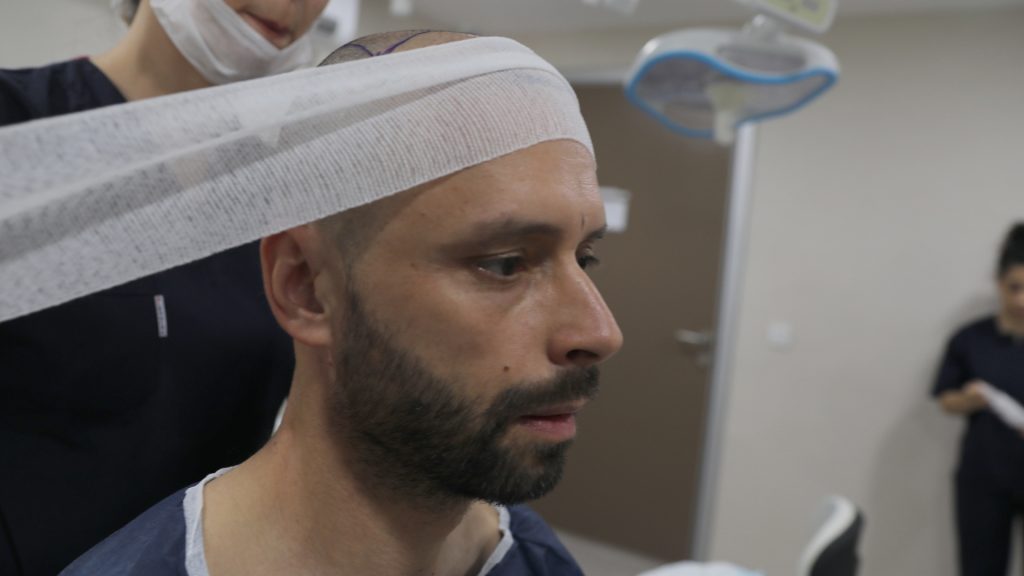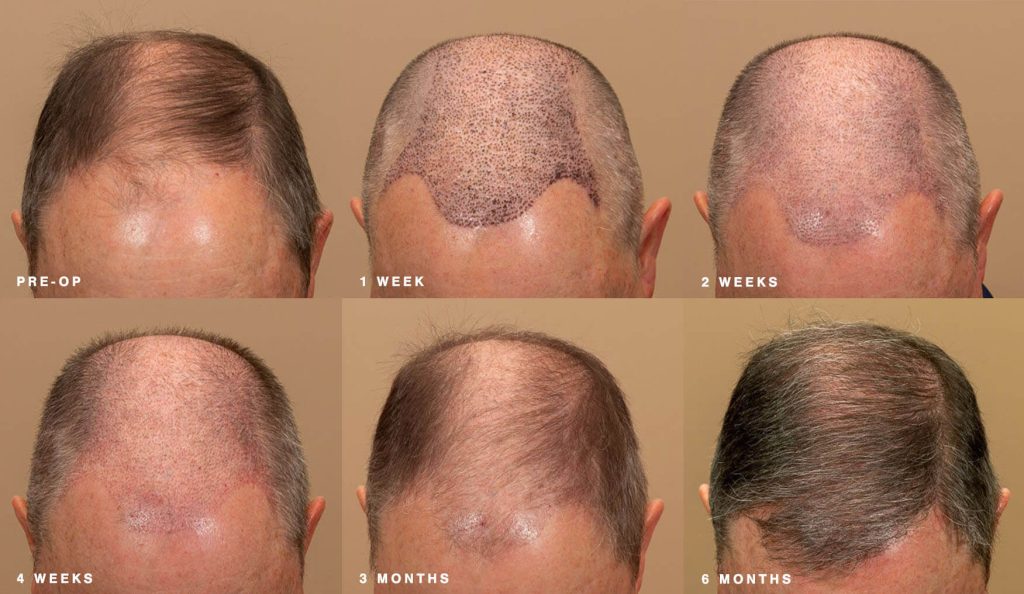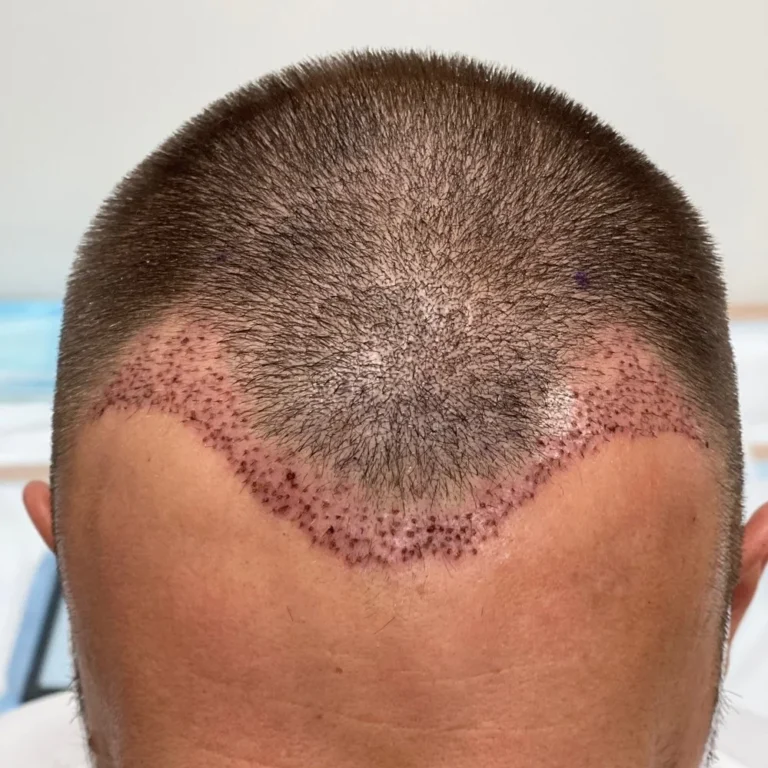Learn About the Recovery Process After Hair Transplant Surgery
In the realm of hair restoration, undergoing a hair transplant procedure marks a significant step towards reclaiming confidence and rejuvenating one’s appearance. Beyond the surgery itself lies a crucial phase often overlooked: the recovery process. Understanding the intricacies of hair transplant recovery is essential for maximizing the success of the procedure and achieving desirable outcomes. These insights into the various aspects of hair transplant recovery, including preoperative preparation, postoperative care, long-term maintenance, and managing expectations can help aid the recovery process. By learning the phases of the recovery journey, we aim to equip individuals with the knowledge and strategies necessary to navigate the process with confidence, resilience, and ultimately, renewed self-assurance.
PREOPERATIVE PREPARATION
Preoperative preparation is a crucial phase in the journey towards hair transplant surgery, setting the stage for successful outcomes and a smooth recovery process. A fundamental step in this preparation is consultation with a qualified and experienced hair transplant surgeon. During this consultation, individuals have the opportunity to discuss their treatment goals, expectations, and any concerns they may have regarding the procedure. The surgeon evaluates the individual’s candidacy for hair transplant surgery, considering factors such as the extent of hair loss, scalp condition, and overall health. This initial consultation serves as an essential opportunity for individuals to gain a thorough understanding of the procedure, its potential benefits, and any associated risks or limitations.
Moreover, preoperative discussions with the hair transplant surgeon allow for a comprehensive exploration of treatment goals and expectations. Individuals can articulate their desired outcomes, whether it involves restoring hair density, enhancing hairline aesthetics, or addressing specific areas of concern. By establishing clear treatment goals and expectations, both the individual and the surgeon can work collaboratively to develop a personalized treatment plan tailored to the individual’s unique needs and preferences.

In addition to discussing treatment goals and expectations, preoperative preparation involves receiving detailed preoperative instructions from the surgeon or their medical team. These instructions may include guidelines for medication management, dietary restrictions, and lifestyle modifications in the days leading up to the surgery. Following these instructions diligently helps optimize the individual’s health and readiness for the procedure, minimizing the risk of complications and promoting optimal surgical outcomes.
Preoperative preparation encompasses mental and emotional readiness for the surgery and recovery process. Undergoing hair transplant surgery can evoke a range of emotions, including excitement, anticipation, and anxiety. It is essential for individuals to engage in open communication with their surgeon, expressing any fears or concerns they may have and seeking reassurance and support as needed. Engaging in relaxation techniques, practicing mindfulness, and maintaining a positive mindset can also help individuals cultivate resilience and emotional preparedness for the surgical journey ahead. By addressing both the physical and emotional aspects of preoperative preparation, individuals can approach hair transplant surgery with confidence, clarity, and a sense of empowerment, laying the groundwork for a successful procedure and a smooth recovery process.
POSTOPERATIVE CARE
Postoperative care following hair transplant surgery is crucial for promoting optimal healing, minimizing complications, and maximizing the success of the procedure. Immediately after the surgery, individuals receive detailed postoperative instructions from their surgeon or medical team. These instructions typically include guidelines for wound care and activity restrictions to protect the newly transplanted hair follicles and facilitate proper healing. It is common for individuals to be advised to avoid strenuous activities, excessive bending or stretching, and direct sunlight exposure in the immediate postoperative period to minimize the risk of dislodging grafts or causing trauma to the scalp.

In addition to wound care and activity restrictions, postoperative care involves managing common postoperative symptoms such as swelling, discomfort, and numbness. Swelling and discomfort are common side effects following hair transplant surgery and typically peak within the first few days before gradually subsiding. Individuals may be advised to apply cold compresses to the scalp and elevate their head while sleeping to reduce swelling. Over-the-counter pain medications or prescribed pain relievers may also be recommended to alleviate discomfort and promote comfort during the recovery process.
Postoperative care includes adhering to a medication regimen for pain management and infection prevention. Individuals may be prescribed oral antibiotics to reduce the risk of infection and promote proper healing of the surgical site. It is essential to follow the prescribed medication schedule diligently and report any signs of infection or adverse reactions to the surgeon promptly.
Dietary considerations and hydration play a vital role in supporting optimal healing following hair transplant surgery. A balanced diet rich in vitamins, minerals, and protein promotes tissue repair and regeneration, while adequate hydration helps maintain optimal circulation and facilitate the transport of nutrients to the scalp. Individuals may be advised to avoid alcohol and caffeine and increase their intake of water and nutrient-rich foods to support the body’s healing processes. By following these postoperative care guidelines diligently, individuals can promote optimal healing, minimize discomfort and complications, and pave the way for successful outcomes following hair transplant surgery. It is essential to adhere to the recommendations provided by the surgeon and seek guidance if any concerns or complications arise during the recovery process.
RECOVERY TIMELINE
Understanding the recovery timeline is essential for individuals undergoing hair transplant surgery, as it provides insight into what to expect during the healing process and the progression of hair growth following the procedure. In the immediate postoperative period, individuals can expect some degree of swelling, redness, and discomfort at the surgical site. These symptoms typically peak within the first few days before gradually subsiding. It is important to follow postoperative instructions provided by the surgeon, including guidelines for wound care, activity restrictions, and pain management, to promote optimal healing and minimize complications.

During the first week following surgery, individuals may experience some scabbing and crusting at the transplant site as the healing process continues. It is essential to avoid picking or scratching at the scabs to prevent dislodging the grafts and interfering with the healing process. Additionally, individuals may be advised to continue avoiding strenuous activities and direct sunlight exposure to protect the newly transplanted hair follicles.
In the first month post-surgery, the majority of the transplanted hair follicles enter a dormant phase known as the telogen phase, where the transplanted hairs shed temporarily. This shedding is a normal part of the hair growth cycle and should not cause concern. Subsequently, over the following months, new hair growth gradually begins to emerge from the transplanted follicles. Initially, the newly transplanted hairs may appear thin and sparse, but they will gradually thicken and increase in density over time.
Beyond the first month, the progression of hair growth continues, with noticeable improvements in hair density and coverage becoming apparent. By the third to sixth month post-surgery, individuals typically begin to see significant improvements in their hair density and overall appearance. However, it is important to note that hair growth is a gradual process, and final results may not be fully realized until 12 to 18 months after surgery. Patience, adherence to postoperative care instructions, and regular follow-up appointments with the surgeon are essential for achieving optimal outcomes and enjoying the full benefits of hair transplant surgery.
LONG-TERM MAINTENANCE AND FOLLOW UP
Long-term maintenance and follow-up are integral aspects of ensuring the success and longevity of hair transplant surgery outcomes. Adhering to postoperative care instructions is crucial for optimizing the healing process and achieving optimal results. Individuals should continue to follow any recommendations provided by their surgeon regarding wound care, activity restrictions, and medication regimen. Additionally, maintaining a healthy lifestyle, including a balanced diet, regular exercise, and adequate hydration, can support overall well-being and promote optimal healing of the scalp.
In addition to postoperative care, implementing long-term maintenance strategies is essential for preserving the transplanted hair and preventing further hair loss. This may involve incorporating hair care practices that promote scalp health and hair growth, such as using gentle shampoos and conditioners, avoiding excessive heat styling or chemical treatments, and protecting the scalp from sun exposure. Additionally, individuals may consider incorporating hair growth-promoting treatments such as minoxidil or finasteride, as recommended by their surgeon, to further enhance the results of their hair transplant surgery and prevent future hair loss.
Scheduling follow-up appointments with the surgeon for monitoring and evaluation is essential for assessing the progress of hair growth and addressing any concerns or complications that may arise. During these appointments, the surgeon can evaluate the density and quality of hair growth, assess the overall appearance of the transplanted area, and make any necessary adjustments or recommendations to optimize results. Regular follow-up appointments also provide an opportunity for individuals to discuss their long-term hair restoration goals and receive guidance on maintaining their results for years to come.
By adhering to postoperative care instructions, implementing long-term maintenance strategies, and scheduling regular follow-up appointments with their surgeon, individuals can maximize the success and longevity of their hair transplant surgery outcomes. With proper care and attention, individuals can enjoy natural-looking, long-lasting results and renewed confidence in their appearance.
MANAGING EXPECTATIONS
Managing expectations is essential for individuals undergoing hair transplant surgery, as it helps to ensure a positive experience and realistic outcomes. One key aspect of managing expectations is understanding the timeline and expected outcomes of hair transplant surgery. While hair transplant surgery can yield significant improvements in hair density and appearance, it is important to recognize that the results are not immediate. Hair growth following surgery occurs gradually, with visible improvements becoming apparent over several months. It is crucial for individuals to have realistic expectations regarding the timeline for hair growth and to understand that final results may not be fully realized until 12 to 18 months post-surgery.
Moreover, individuals should be prepared for potential challenges and setbacks during the recovery process. Common challenges may include temporary swelling, discomfort, and shedding of transplanted hairs in the weeks and months following surgery. It is important for individuals to remain patient and stay committed to their postoperative care routine, as these challenges are typically temporary and resolve with time. Additionally, individuals should be aware that not all transplanted hairs may survive, and some degree of variability in hair density and texture may occur. Understanding and accepting these potential challenges can help individuals manage their expectations and navigate the recovery process more effectively.
Addressing the emotional and psychological aspects of hair transplant recovery is essential for overall well-being and satisfaction with the results. Undergoing hair transplant surgery can evoke a range of emotions, including excitement, anxiety, and self-consciousness. It is normal for individuals to experience fluctuations in mood and confidence during the recovery process. Engaging in open communication with their surgeon, seeking support from friends and family, and practicing self-care techniques such as mindfulness, relaxation exercises, and positive affirmations can help individuals cope with emotional and psychological challenges. By addressing these aspects of hair transplant recovery, individuals can approach the process with confidence, resilience, and a sense of empowerment, ultimately leading to a positive experience and successful outcomes.
CONCLUSION
Navigating the journey of hair transplant recovery is a transformative experience that requires patience, resilience, and a comprehensive understanding of the process. By adhering to postoperative care instructions, implementing long-term maintenance strategies, and managing expectations, individuals can maximize the success and longevity of their hair transplant surgery outcomes. Through diligent adherence to recommended guidelines, individuals can navigate the challenges and setbacks of recovery with confidence and optimism, ultimately achieving natural-looking, long-lasting results and renewed self-assurance. By addressing the physical, emotional, and psychological aspects of hair transplant recovery, individuals can emerge from the process with restored confidence and a newfound sense of empowerment. With proper care and attention, hair transplant recovery can be a rewarding journey toward renewed hair growth, enhanced appearance, and improved quality of life.
SHOP FOR HAIR LOSS TREATMENTS


